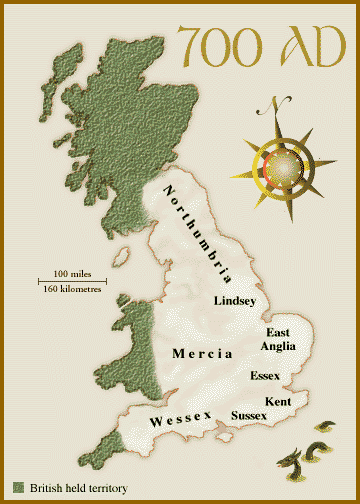Difference between revisions of "Heptarchy"
From Roman2Norman
Jump to navigationJump to search| Line 91: | Line 91: | ||
</tr> | </tr> | ||
<tr> | <tr> | ||
| − | |||
| − | |||
| − | |||
| − | |||
| − | |||
| − | |||
| − | |||
| − | |||
| − | |||
| − | |||
| − | |||
| − | |||
| − | |||
| − | |||
| − | |||
| − | |||
| − | |||
| − | |||
<td width="14%"> </td> | <td width="14%"> </td> | ||
<td width="14%"> </td> | <td width="14%"> </td> | ||
Revision as of 19:54, 1 March 2007
This is the name used to describe the configuration of the rulership of England (excepting Scotland and Wales) during the Anglo-Saxon period and continuing until the Viking invasion and the advent of the Danelaw. The seven major kingdoms of which the Heptarchy was comprised are listed below.
|
East Anglia
|
Essex
|
Kent
|
Mercia
|
|||
|
Northumbria
|
Sussex
|
Wessex
|
||||

Image courtesy of Britannia.com, LLC (© 1999), used with permission.